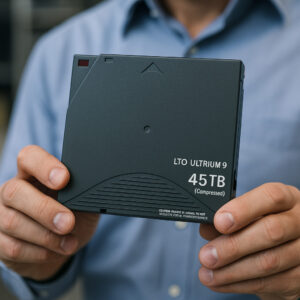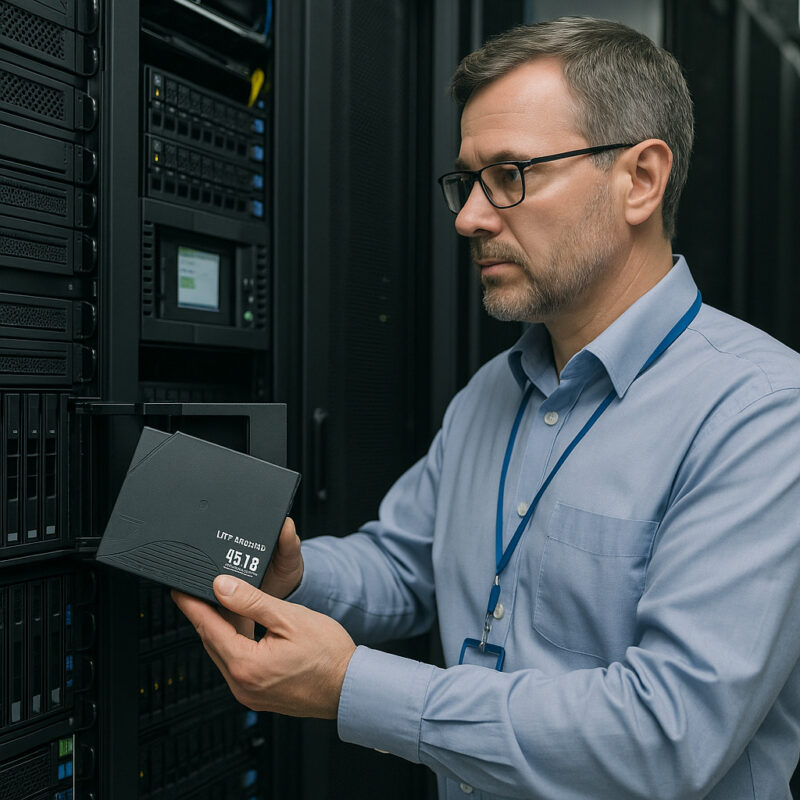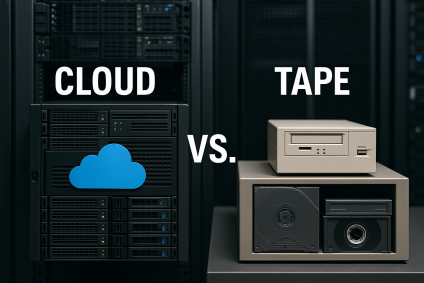5 Mistakes Made When Migrating to Tape (And What to Do Instead)
Tape storage is no longer a relic of the past. With the evolution of LTO and IBM 3592 tape formats, today’s tape solutions deliver massive capacity, low cost of ownership, and air-gapped protection that’s unmatched by other storage types.
Yet despite its advantages, many organizations stumble during the migration process. Mistakes made when migrating to tape can lead to data loss, compliance violations, and restore failures—costing your business time, money, and reputation.
If you’re considering or currently planning a tape migration, this guide highlights the most common missteps and how to avoid them. Let’s break it down.
1. Skipping the Planning Phase
Mistake: Rushing into a tape migration without a proper roadmap.
Why It Happens: Teams often underestimate the complexity of moving massive datasets or fail to assess which data should be archived.
Fix It:
-
Conduct a full inventory and classify your data—hot vs. cold, compliance-driven, critical vs. expendable.
-
Build a phased migration plan with clearly defined goals and restore time objectives.
-
Assign roles, schedule test runs, and use tape-aware software to automate tiering decisions.
Expert Insight: Planning is the cheapest insurance against long-term migration headaches.
2. Overlooking Security and Compliance
Mistake: Failing to meet regulatory requirements or secure sensitive data during the migration.
Why It Matters: Non-compliance with HIPAA, PCI-DSS, GDPR, or SEC rules can trigger steep penalties and legal trouble.
Fix It:
-
Use LTO or 3592 drives that support built-in AES-256 encryption.
-
Opt for WORM (Write-Once-Read-Many) tapes when dealing with regulatory archives.
-
Maintain a strict chain of custody and log all tape handling activities.
-
Follow NIST 800-88 sanitization guidelines for retired media.
Pro Tip: Always treat your migration like an audit is just around the corner—because it might be.
3. Neglecting Data Integrity Checks
Mistake: Assuming your data will restore perfectly without testing.
Why It’s Risky: Without regular verification, corruption or bit rot can silently destroy valuable archives.
Fix It:
-
Validate files before and after the transfer using checksums or hash functions.
-
Implement ECC (Error Correction Codes) to detect and correct corruption.
-
Schedule quarterly test restores and keep redundant copies offsite.
Bottom Line: If you haven’t tested the restore, don’t assume the backup is safe.
4. Believing Tape Is Too Slow or Outdated
Mistake: Clinging to outdated perceptions of tape’s performance.
What’s Changed: Today’s tape drives offer multi-terabyte capacity, fast throughput, and integration with robotic libraries.
Fix It:
-
Choose LTO-9 or IBM 3592-JF for modern speed and capacity.
-
Use automated tape libraries to streamline operations.
-
Index your metadata and use active archive software to enable fast retrieval.
Cost Check: Tape storage averages $0.003/GB/year—far cheaper than HDDs or SSDs. Plus, it consumes 87% less energy than spinning disks.
5. Lack of Internal Expertise or Training
Mistake: Handing off the migration to an untrained IT team.
Why It Backfires: Tape requires specific knowledge—mishandling leads to tape damage, restore issues, or worse.
Fix It:
-
Train your staff on tape systems, cleaning, labeling, and recovery protocols.
-
Partner with certified tape migration experts.
-
Document procedures for future IT teams.
Long-Term Tip: SOPs today prevent data disasters tomorrow.

Advanced Tape Migration Tips
What Data Belongs on Tape?
-
Cold archives and infrequently accessed files
-
Legal, financial, and healthcare data requiring long-term retention
-
Ransomware-proof backups stored offline
-
High-volume assets like surveillance video and scientific data
Recommended Formats:
-
LTO-9 (up to 45TB compressed)
-
IBM 3592-JF (for enterprise-class speed and scale)
-
If you’re still on LTO-4 or older—it’s time to migrate.
Should I Air-Gap My Backups?
Absolutely. Tape is one of the few remaining true offline solutions, making it immune to cyberattacks.
Can I Recycle Old Tapes?
Yes! At WeBuyUsedITequipment.net, we offer eco-friendly and NIST-compliant recycling and buyback services with full chain-of-custody reporting.
Bonus: Is “Cloud Cold Storage” Misleading?
Cloud providers promote low-cost cold storage, but here’s the catch:
-
You pay monthly—even if the data isn’t accessed
-
Retrievals are slow (sometimes days)
-
Egress fees can hit $50+ per terabyte
With tape:
-
You own the hardware
-
Retrievals are instant with a robotic library
-
There are no recurring costs or surprise fees
Sustainability Bonus: Tape storage has a lower environmental impact than cloud and spinning disks over a decade.
Final Thoughts: Migrate with Confidence, Not Regret
Tape storage is a smart move for long-term data retention—but only if done right. Avoiding the most common mistakes made when migrating to tape can save you from security breaches, compliance failures, and expensive downtime.
At WeBuyUsedITequipment.net, we specialize in:
-
Tape migration planning and assessment
-
Chain-of-custody compliant logistics
-
Secure data erasure and NIST 800-88 sanitization
-
Eco-conscious tape recycling and buyback programs
Need help mapping out your tape strategy?
Reach out today for a free consultation and discover why so many IT professionals trust us with their mission-critical storage needs.
Contact Us
WeBuyUsedITequipment.net (powered by DES Technologies)
📧 sales@webuyuseditequipment.net
📞 (855) WE-BUY-TAPE | 001-909-466-7682
🌐 www.webuyuseditequipment.net







